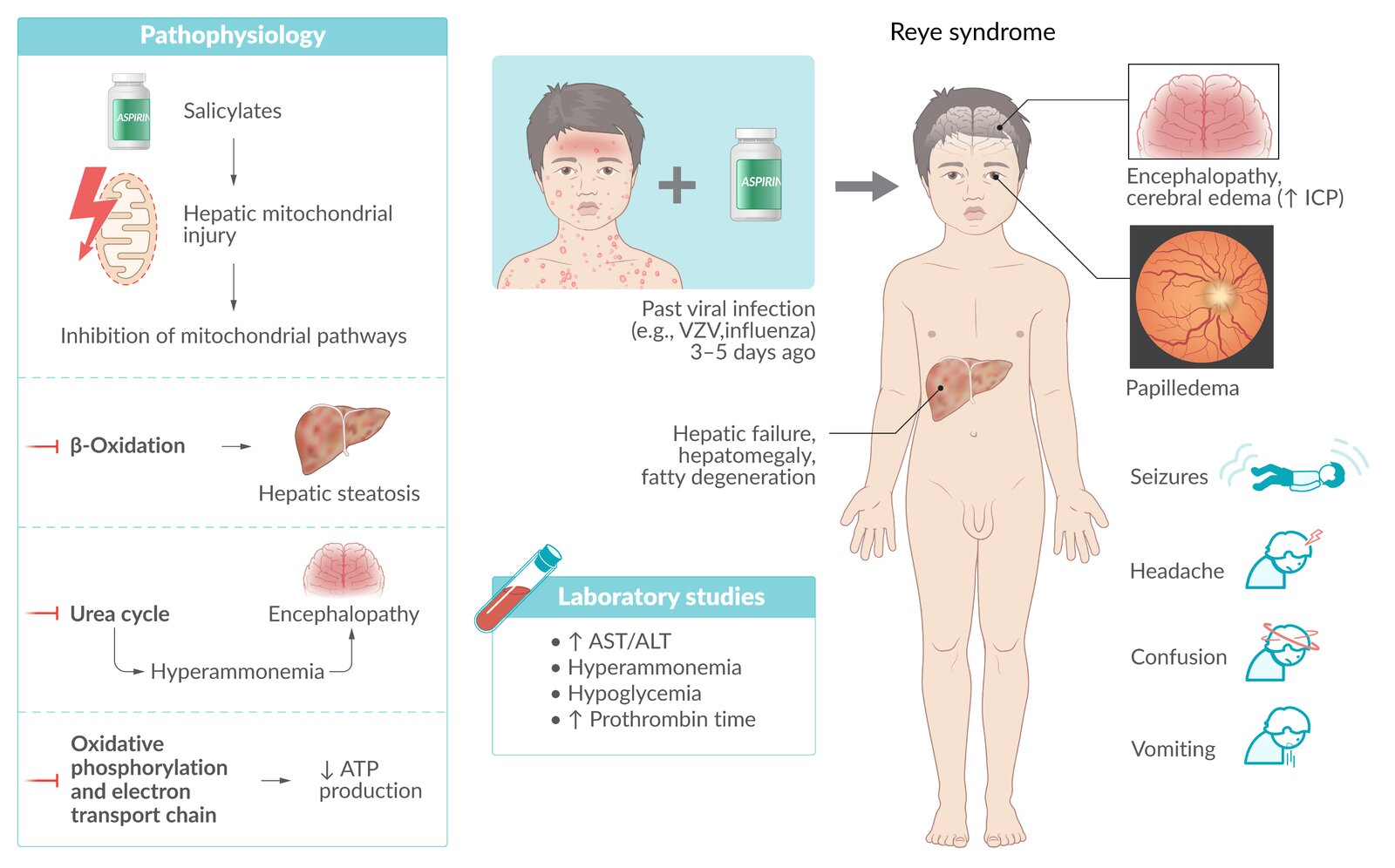Description: a rare type of hepatic encephalopathy aspirin use for viral illness in children < 19 years
Etiology: aspirin use in individuals < 19 years of age with a febrile illness
Pathophysiology
Aspirin use in children during viral infection (eg, influenza , varicella)
Mitochondrial toxicity → impaired fatty acid metabolism
Microvesicular fat deposits in the liver Hepatic dysfunction → hyperammonemia
Diffuse astrocyte swelling (ie, cerebral edema)
Clinical features
Preceding viral infection (e.g., influenza , varicella or viral gastroenteritis): The first symptoms of Reye syndrome usually begin 3–5 days after a viral illness.
Acute encephalopathy
Severe vomiting Altered mental status (ranging from lethargy to delirium and coma) Neurological symptoms (e.g., seizures , fixed pupils)
Liver failure
Prevention
Aspirin should be avoided in individuals < 19 years of age, especially those with fever.
Exception: children with Kawasaki disease
Differential diagnostics
Feature Salicylate (ASA) Poisoning Acetaminophen (APAP) PoisoningReye Syndrome Classic Hx Overdose (intentional/accidental) Intentional OD; chronic EtOH use Child after viral illness + ASA use Pathophysiology Uncouples ox-phos; ototoxicity Glutathione depletion → toxic metabolite (NAPQI) → liver necrosis Mitochondrial dysfunction → fatty liver & encephalopathy Presentation Tinnitus , fever, hyperventilation, AMSAsymptomatic initially → RUQ pain → fulminant liver failure Profuse vomiting, delirium /coma, NO jaundice Key Lab Finding Mixed resp. alkalosis + metabolic acidosis Massive AST/ALT elevation (>1000s)Hyperammonemia hypoglycemia Antidote / Tx IV Sodium Bicarbonate , HemodialysisN-acetylcysteine (NAC) Supportive care (manage ICP, hypoglycemia ) Buzzword ”Mixed acid-base disorder" "Rumack-Matthew nomogram" "Child + virus + aspirin”
Link to original
